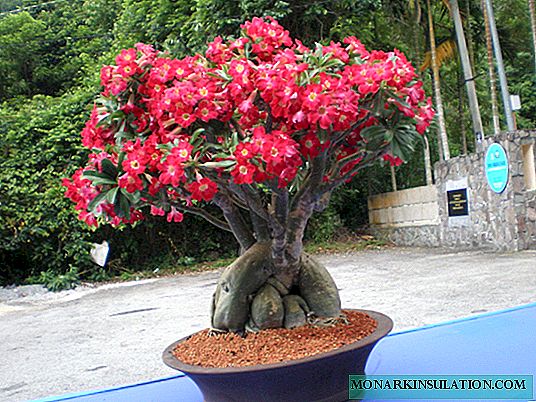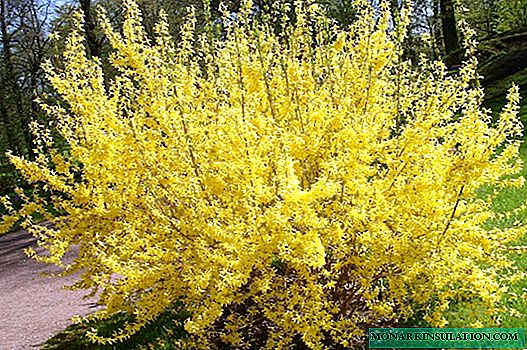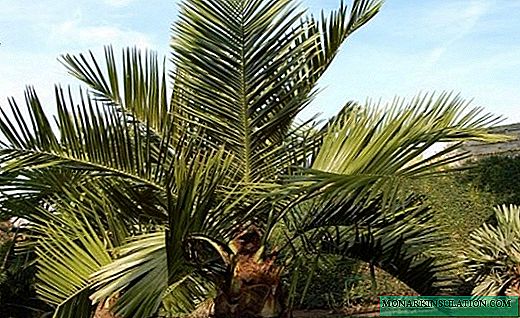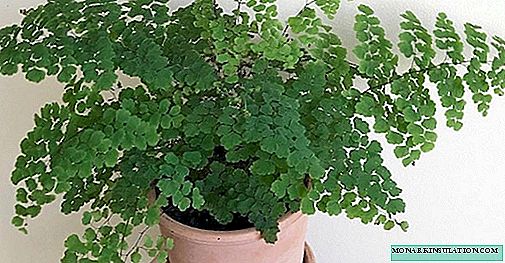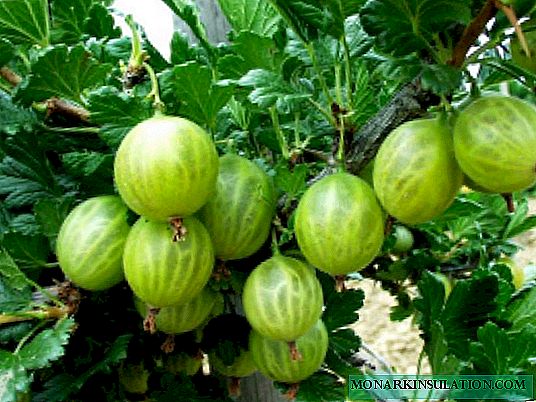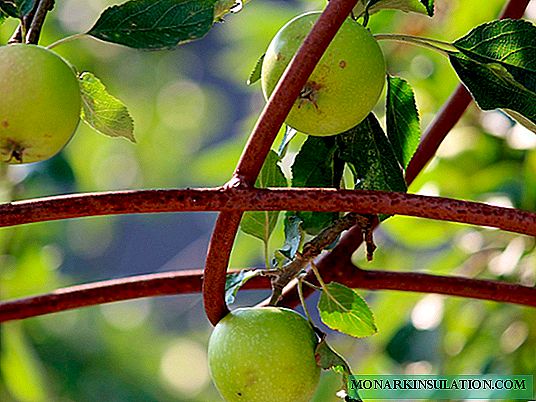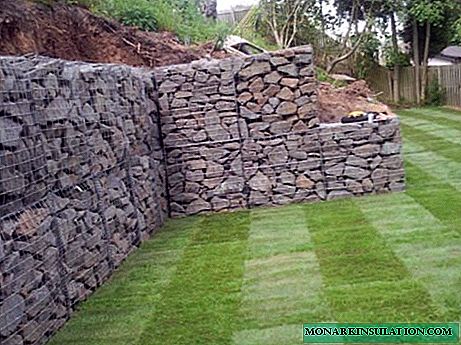
Gabions are called containers twisted from metal wire, which are filled directly on the object with stone or rubble. Many years ago, these engineering building structures were actively used by the military in the construction of fortifications (redoubts). Now, with the help of gabions, they form the banks of water bodies, arrange retaining walls, and strengthen slopes. In addition, mesh boxes of regular geometric shapes are used as decor elements in landscape design. As a rule, do-it-yourself gabions are not made, acquiring factory nets of the right size in the right amount. The delivered mesh containers are straightened at the place of their installation and filled with the selected bulk material. Designers have already come up with a lot of ideas for decorating home gardens with gabion structures. Some of them can be successfully implemented on their land by copying the creation they saw in the picture. It is a little more difficult to develop your project, having studied the ready-made proposals of landscape design specialists.
What are gabions made of?
Gabion manufacturers use galvanized wire as a starting material, the coating density of which is 250-280 g / m2. This value is five times higher than the density of galvanization of the mesh "netting" used in the construction of various kinds of fences. Instead of galvanizing, a PVC coating can be applied to the wire. The thickness of the coated wire ranges from 2-6 mm. Mesh containers should have particular strength, achieved through the use of double wire torsion technology. The mesh cells are in the shape of a regular polygon. The filler is selected taking into account the size of the mesh cells. Large gabions are additionally equipped with sectional compartments that prevent the protrusion of their mesh walls at the time of loading the filler.
Separate boxes are fastened in a single monolithic structure using wire. At the same time, it is not recommended to use other types of wire other than the one from which the gabions were made. Cheap analogues can lead to deformation of the structure and its premature destruction.

Gabion consists of a rectangular mesh frame filled with stone or large gravel, the size of which exceeds the dimensions of the mesh cells
Here are the properties of gabions that attract builders and designers:
- Flexible metal mesh walls allow the gabion to take any form of soil surface. Not afraid of gabion structures and seasonal soil movements. Due to its flexibility, the structure can only slightly deform at the same time, but not collapse.
- Due to the stone filler, Gabions have excellent water permeability, so the structure does not experience hydrostatic load. During installation, time and resources are saved, since a drainage system for draining water is not required.
- The stability and strength of gabion structures only increases with time, since plants sprout in the soil that accumulates between the stones. Their roots, intertwined, additionally strengthen the entire structure.
- When installing gabions, heavy construction equipment is not required (with the exception of large-scale projects to strengthen the coastline and slopes), therefore, it is possible to preserve the natural landscape, minimizing the degree of human intervention in the ecological environment.
- Gabion structures are durable and able to stand for years without being destroyed. This quality is ensured by the quality of galvanizing the wire, as well as the above properties of the stone filler.
- Well-designed structures from gabions do not require repair and maintenance during operation.
- When using gabions, it is possible to save money (compared with the construction of reinforced concrete structures) and reduce labor costs.
Photos with options for using gabions can be seen in the material: //diz-cafe.com/photo/obustrojstvo/gabiony.html
The main types of gabions and options for their use
In geometrical form, gabions are divided into three types:
- box-shaped;
- flat (mattress-mattress);
- cylindrical.

All gabion structures can be divided into three main groups according to the shape of the frame: cylindrical, flat and box-shaped, which can be welded or mesh
The sizes of box containers can vary in the following limits: length - from 2 to 6 m, width - from one to two meters, and height - from half a meter to one meter. Large-sized designs complement dividing walls, called diaphragms. Boxes are made in two ways: welded and mesh. The first method involves welding rods of wire, laid perpendicular to each other, at their intersections. In this case, the cells of the box are rectangular in shape. To connect the walls using a special wire spiral. The second method (mesh) is based on attaching a mesh made of double torsion steel wire to a rigid frame. In this case, the mesh cells are hexagonal.
Important! Box gabions are suitable for the installation of fences of flower beds and vegetable beds. Rectangular containers can also be part of the fence. Gabions are perfectly combined with wooden sections of a fence. They also use boxes when installing outdoor furniture in recreation areas.
Flat (mattress-mattress) gabions, the height of which does not exceed 30 cm, have the ability to repeat all bends and surface irregularities. This type of structure is erected along the banks of rivers, ravine slopes, and is laid at the bottom of shallow ponds and streams. In this case, pebble usually acts as a filler. If necessary, a solid foundation is made of flat gabions, on which box structures are subsequently installed. Underwater foundations and parts of retaining walls are erected from cylindrical gabions capable of bending in all directions.
Which gabion filler is right for you?
Choose a stone for gabions, depending on the location (surface or underwater) of the erected structure. Both natural and artificial rough grinding stones are used. This takes into account their shape, size, composition. The most popular are hard rocks of volcanic origin: basalt, quartzite, granite, diorite. Gabions are often filled with sandstone, as well as other stony rocks, characterized by high frost resistance and strength. Gabions used for decorative purposes can be filled with alternative materials: wooden saw cuts, pipe pieces, glass, broken tiles, bricks, pavers, crushed concrete, etc.

The type, shape, size, and color of the stone filler used affects the decorative qualities of gabion structures
When arranging surface gabions, it is recommended to fill up a stone, the fraction size of which is one third greater than the length of the twisted mesh cell. Underwater structures are filled with an even larger stone, half the size of the mesh container mesh.
In order for gabion structures to merge with the local landscape, it is necessary to use natural stone quarried at local quarries for filling. Gabions are laid out in round boulders, crushed gravel, and large pebbles. In each case, the structure will look beautiful in its own way.
Important! To highlight the gabions on the site and emphasize the special texture of their walls, it is recommended to lay asphalt next to them or to break the lawn. Against the background of a flat surface, containers filled with stone will look very original.
Installation of gabions: all about materials and the progress of work
The following materials will be required to assemble a gabion structure:
- metal grid;
- special metal spirals;
- wire staples;
- steel pins;
- geotextile;
- braces;
- filler (stones, sand, soil, construction waste and other bulk construction materials).
Before starting installation work, check the availability of all consumables on the list. The absence of any element can inhibit the installation process of gabion. To connect the gabion panels using wire staples or a metal spiral, while one of the walls serves as a lid, and therefore must open. After filling, it is also attached with a spiral to an adjacent panel. With the help of pins with the pointed ends of the box, they are firmly fixed to the ground.
Filling the metal mesh with stone material is carried out in two stages. A stone is laid in a mesh container in layers to half its height. Then, the opposite walls of the gabion are pulled together with braces to prevent protrusion of the rear and front panels. Braces are called special wire ropes. Their number depends on the length of the gabion. Braces or stiffeners are released every four to five mesh cells. After that proceed to the second stage, which consists in further filling the container with stone or gravel.
Large-sized stones spread the bottom and front walls of the gabion. The middle of the container can be filled with small gravel or construction debris in general. To backfill did not fall between large stones, use geofabric. She lined the space between the stones, filling it with available material. Then the backfill is closed on top with the ends of the geotissue, which is pressed with a layer of large gravel. After filling, the lid of the mesh container is closed and tightened by a wire spiral.
Geotextiles are conveniently used in many areas of human activity: in land management, in the field of construction, landscape design. Read about it: //diz-cafe.com/ozelenenie/primenenie-geotekstilya.html
Gabion structures in pictures: ideas of designers
The use of gabions in landscape design is dictated by the need to create unique reliefs on the site. Thanks to these lightweight and at the same time durable constructions, designers create elevations and depressions on flat areas, which they then use to break down colorful flower beds and artificial ponds decorated with murmuring waterfalls.

Box gabions used for the manufacture of garden furniture are in perfect harmony with the tree from which the tabletop and two benches are made

Another option for using gabion of complex shape in the manufacture of garden furniture located on the site in the recreation area

The cylindrical gabion acts as an unusual fence of a flower bed. Against the background of the stone filler, delicate flowers of rich shades look especially beautiful

Retaining wall made of curved gabion, the design of which is built bench in the shape of a boat for relaxation and contemplation of the beauties of the garden

The use of gabions in the design of the coastline of a reservoir located on the estate. Wood, stone and forged railings complement each other perfectly
Any land plot can be turned into a fabulous garden that brings joy and peace. To do this, you will have to work yourself or invite professional designers who know how to make and install gabion, as well as how to fill it.


